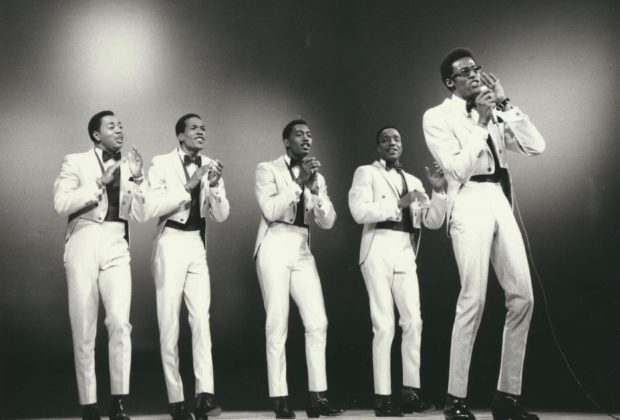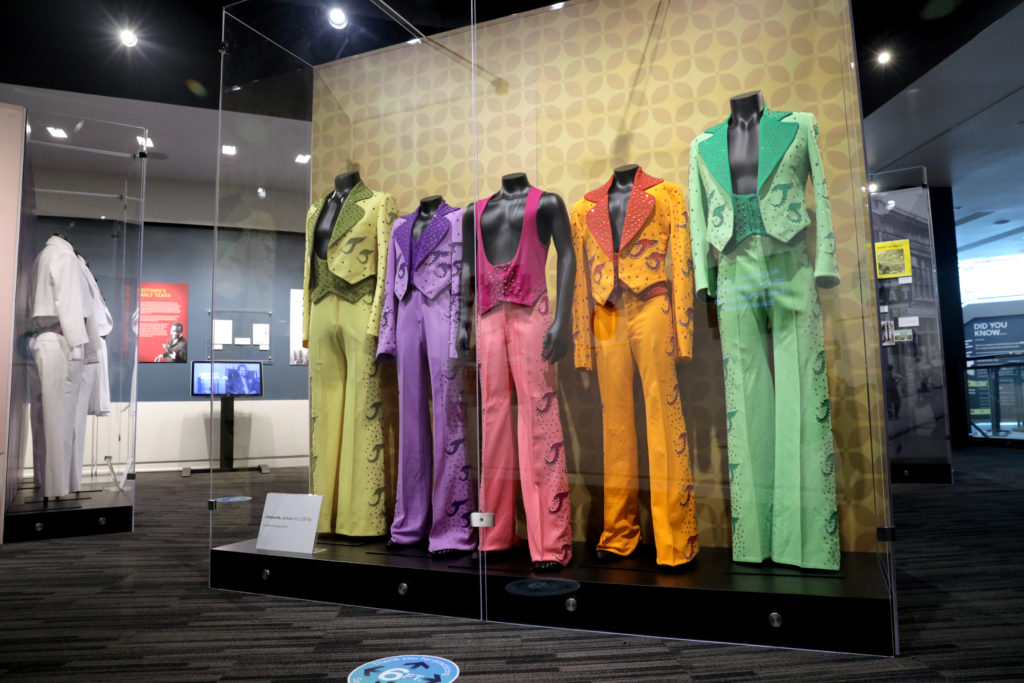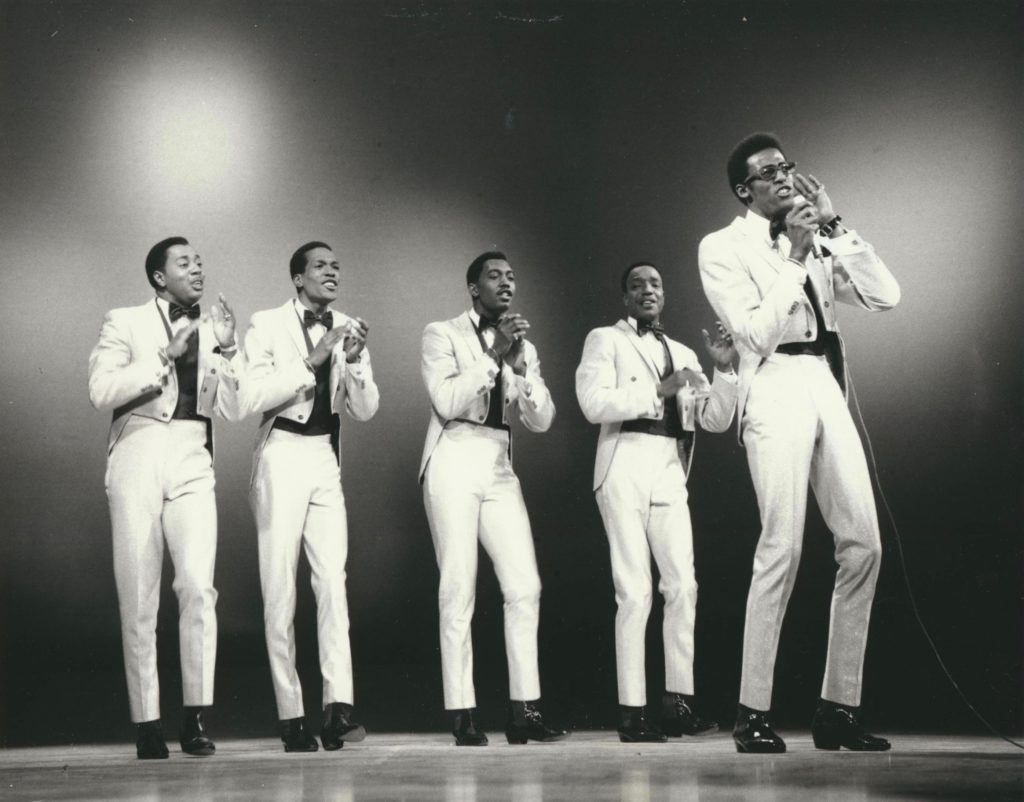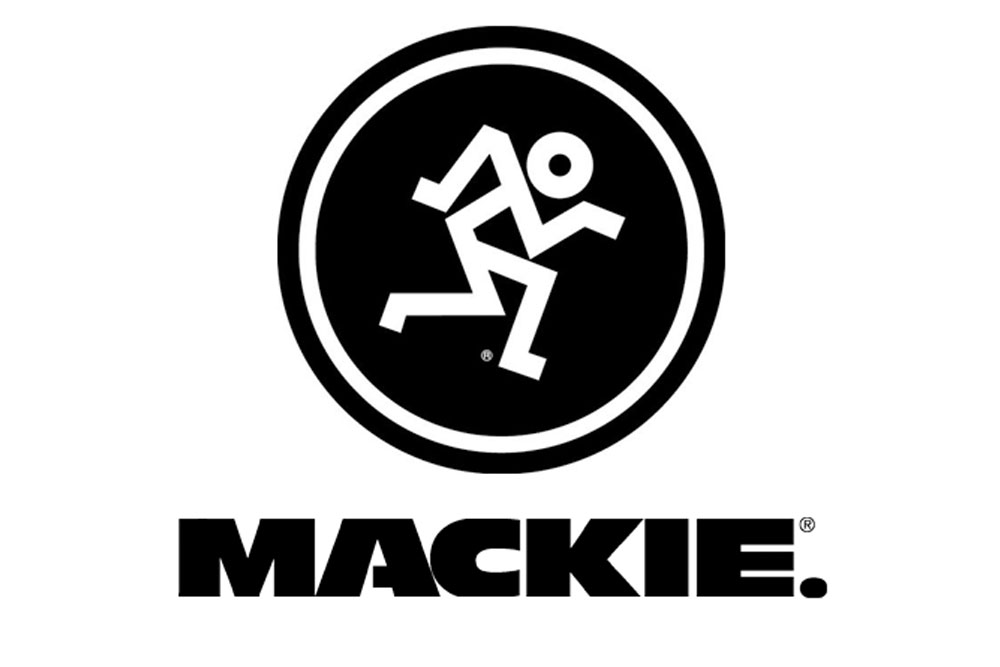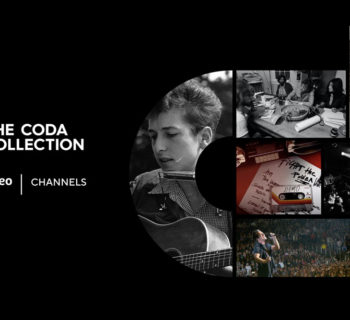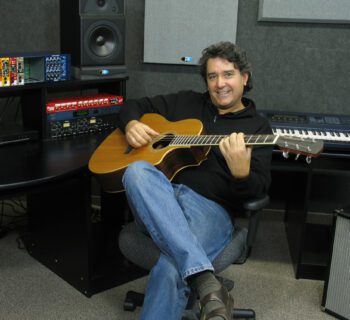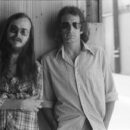The GRAMMY Museum in Los Angeles, CA has reopened its doors to the public on Fri, May 21 and has announced details for its new exhibit, Motown: The Sound Of Young America, presented by City National Bank. The exhibit will be the Museum's premier second floor exhibit through winter 2021.
Motown: The Sound Of Young America traces the evolution of the label, focusing on its major artists and musical achievements, and explores how the sound of Motown continues to influence some of pop music’s most important artists today.
In addition to stage outfits from many of Motown’s top performers, such as the Temptations, the Four Tops, the Miracles, and The Supremes, the exhibition also includes exclusive interviews with many Motown legends, letting visitors get deep inside the creative process perfected at Motown 60 years ago.
Visitors will also experience interactive displays, including an opportunity to perform The Supremes’ “Stop! In The Name Of Love” on stage and learn the Temptations’ signature dance moves.
“The music of Motown, especially in the 1960s, represents a high-water mark in American music,” said Bob Santelli, the exhibition’s curator and Founding Executive Director of the GRAMMY Museum.
“The long list of No. 1 hits, the incredible stable of stars, and the genius of Berry Gordy Jr., both as a businessman and nurturer of talent, made Motown one of the most successful and impactful record companies of all time.”
“We’re honored that the GRAMMY Museum is bringing this vital exhibit to Los Angeles. In the past 60 years, Motown has repeatedly proved itself as a galvanizing musical and cultural force, amplifying the voice of Young America. Providing a firsthand view of the development of artists like Marvin Gaye, The Supremes, Stevie Wonder, NE-YO, Lil Baby and MIGOS will, I hope, spark the dreams of a new generation," said Ethiopia Habtemariam, Chairman/CEO of Motown Records and President of Urban Music/Co-Head of Creative at Universal Publishing Music Group.
A blend of gospel, blues and pop, Motown began in Detroit in the late 1950s and quickly became “The Sound of Young America,” crashing the American pop charts and challenging the Beatles-led British Invasion. The visionary of Motown, Berry Gordy Jr., a former prizefighter and songwriter who believed that talent could be found on nearly every Detroit street corner, brought the iconic sound into the mainstream, and it's a sound that continues to influence music and culture around the world. The exhibit was supported by Universal Music Group, Motown Records, and UMe and first premiered at the LBJ Presidential Library in 2019.
Exhibit highlights include: Berry Gordy's $800 loan contract (facsimile) used to start the Motown record label "Butterfly" gowns worn by The Supremes, Harmonica and keyboard played by Stevie Wonder, Ray Parker Jr.'s Gretsch guitar, Recording Academy Hall Of Fame Awards for the Miracles and full sets of outfits worn by the Jackson 5, the Four Tops, and The Temptations.
Members of the Jackson 5 for decades were frequent guests at Los Angeles Lakers basketball games. Years ago the family clan were often seen in West Hollywood on a local basketball court around their 1969-1973 recording sessions for Motown Records.
I had witnessed some of the mid-1960s Motown Revue live road shows in Los Angeles and Hollywood and danced on a couple of music TV shows when the Motown acts would be booked on the Sam Riddle-hosted 9th Street West on Melrose Avenue and Dick Clark’s American Bandstand Vine Street location.
My brother Kenny and I went to the KHJ Second Annual Appreciation Concert at the Hollywood Bowl on April 29, 1967, for the United Negro College Fund and the UCLA School of Music, headlined by the Supremes with Buffalo Springfield, the Seeds, Brenda Holloway, Johnny Rivers and the Fifth Dimension.
In 1966 I saw the Temptations on Shindig! at the ABC-TV studios on Prospect Avenue. They sang a live vocal on “My Girl,” mixed with a pre-recorded music track. They were clad in matching powder blue outfits in front of me. That was living color even though the series was broadcast in black and white.
In 1995 Motown Records label founder, Berry Gordy, Jr. wrote his autobiography To Be Loved for Warner Books. After publication of the volume I conducted an extensive interview with Gordy that appeared in both the HITS and Goldmine periodicals.
At the time I asked Gordy inside his Bel-Air, California home that afternoon why he chose to publish his memoir.
“Several reasons,” he announced. “The history. The legacy. As a general thing I wrote it to, of course, set the record straight, which had long been misunderstood. I wrote it because there were many unsung heroes in my company that were part of this operation, you know, who were not known and who taught the artists how to walk, sing, dance, talk and even eat, and stuff like that. And they’ve been with me 25, 30 years, these people. The chaperones who went on the road so much of their time and their life, really being very strict on these artists, and working with these artists.
“The artists are famous, and they will always be famous. And the Motown artists are still working today, you know, in clubs, going on television, and doing a lot of stuff. So, the unsung heroes were another reason I wrote the book.”
During my 1994 interview with Berry, we discussed the heralded Holland, Dozier and Holland production and songwriting team.
“H-D-H was phenomenal. They came up with hit after hit. They started a thing. They had a lock on the Supremes and they took them, and did stuff on Marvin. H-D-H was absolutely brilliant. The three of them were different and they all complemented each other. Eddie (Holland) did mostly vocals, Brian (Holland), I thought was the most talented, creative person. He was my protégé for many years. I thought Lamont (Dozier) was also a good writer, and he was good on backgrounds and this and that and so forth. But Brian would do something like he would play and sing and create something and all he would give ‘em was, like, ‘I Can’t Help Myself’ ‘Sugar Pie, Honey Bunch,’ and pass it on. So they had their own assembly line. And they were tremendous.”
“I’m just so fortunate to have known so many brilliant people,” added Mary Wilson of the Supremes. “However, just to talk about Holland-Dozier-Holland was such a wonderful experience for our growth and journey. They took us through the times that were going on in the world. Each time they would bring us to another level. The records show this. We did ‘You Can’t Hurry Love’ and ‘You Keep Me Hanging On.’ That’s why we had wanted them in the beginning. We had to grow into that.”
“After we no longer had H-D-H there was a period where we didn’t have anyone,” lamented Mary.
“That to me was the worst period musically. So we got with Frank Wilson who was just brilliant,” enthused Wilson. “What was great about him is that now it was more a West Coast. It wasn’t Detroit. We did everything pretty much on the West Coast, even though we still recorded in Detroit. “And I’m also very proud of the songs the Supremes did later after Diane left that we did with producer Frank Wilson like ‘Nathan Jones,’ ‘Stoned Love’ and ‘Up The Ladder To The Roof.’
“Frank brought a different feel. There’s a wah-wah pedal on ‘Up The Ladder To The Roof,’ a more seventies soulful kind of feel. And after we no longer had Diane. Berry Gordy was very helpful in bringing Jean Terrell, who I just adored. And she was the best replacement for Diane, not that anyone could ever replace Diane.
“For me, the only group was the three of us. Me, Flo and Diane. The seventies was a seventies group. And Frank was able to capture who we were at that point with Jean Terrell. He was just a brilliant producer.
“We had a whole other concept when we moved out to the West Coast. We did our sessions in Los Angeles. Hollywood. The Motown studio,” Mary recollected.
For Goldmine magazine 30 years ago I asked songwriter, record producer, music publisher and deejay, Kim Fowley, about the origins of Motown’s footprints in Los Angeles when he had a stint working for Motown Records in 1960.
Kim was hired as the first promo man for the company in 1960. He schlepped around the Miracles’ “Way Over There” to Southern California AM radio stations before “Shop Around” became a hit single.
“I got the Motown job after seeing their ad in Cash Box,” remembered Fowley.
“Berry Gordy’s sister Loucye took my phone call in Detroit that I placed from Happy’s Gas Station on Hollywood Boulevard, which I also used as an office. She was gracious, focused and heard my pitch about how I could help the label out in California.
“Berry then got on the telephone line. We talked about singer Marv Johnson who he just cut, and he quickly sent me a letter with a check. You could be on the street then, based out of a gas station, and get a label head on the phone in those days.
“The [employment] letter is on my website. kimfowley.net.
“Motown was based on the Detroit Auto assembly line,” underlined Fowley. “It’s based on the sound of building cars and fenders. It has to be loud because it’s a loud city. Motown started opening up as Norman Whitfield and others involved with the label began hearing FM underground progressive radio.
“Berry Gordy was the Barack Obama of the late 1950s and early ‘60s in terms of having an executive reach and leadership in a white world and in an international world. The music of Motown is timeless.”
Visionary talent scout Russ Regan followed Fowley in 1961 promoting early Motown vinyl in the Southland region. Regan became a record executive and eventually President of UNI/MCA Records and 20th Century Records, later vice-president of A&R at Motown Records.
“The first record I promoted was ‘Please Mr. Postman’ by the Marvelettes in 1961,” Regan told me in a series of interviews we conducted last decade.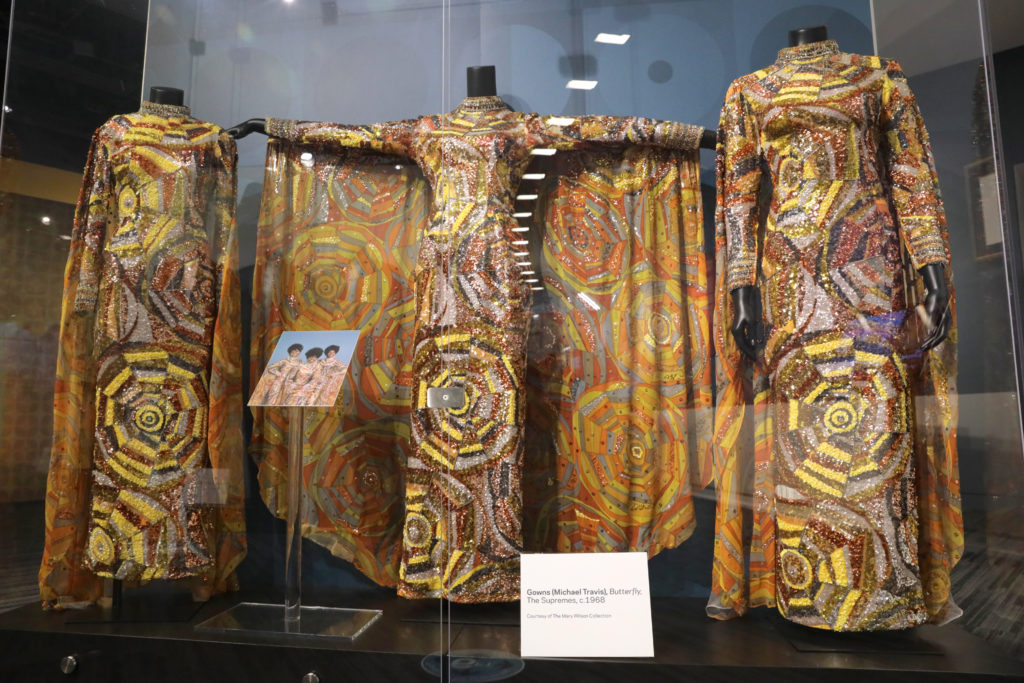
“I also worked with the Supremes, the Miracles, and Marvin Gaye. Believe it or not, Marvin Gaye had moments of greatness on stage or he could be lousy. And I’ll tell you why. He really didn’t like performing. It was a job to him. It can’t be a job for a performer. People don’t realize this. You can’t be up there thinking you are working.
“Barry Gordy, Jr. used to come to town. He taught me about hooks in songs. And that people buy records because they have to love them, not like them. There used to be record hops at high schools. One time at Jefferson High school I took Marvin Gaye in Watts. He had never been out there before. The girls attacked him. He lost one shoe of his penny loafers. We went to Fairfax High School. Groups played in the auditorium.
“People like to discover things. The Bahiri Brothers would go into Mississippi with wire recorders and record talent. Barry Gordy offered me a job but I didn’t want to move to Detroit. I’m a California guy. And I was taught a lot about the record business by Berry Gordy, Jr., became a promotion man three years 1961-1964. I learned the value of a song and the hooks of a song. Every Motown hit has hooks in it. It starts with the opening. You can always smell the opening of a Motown record…”
“I’m on a lot of the Jackson 5 records cut in Hollywood: ‘I Want You Back,’ ‘ABC,’ ‘The Love You Save,’ specified guitarist and record producer Don Peake in a 2014 interview we had.
During a 1963 tour of England with the Everly Brothers with the Oldham-managed Rolling Stones as a support act, Peake gave guitar lessons to Keith Richard who later touted Don’s tips in an issue of New Musical Express.
“I have picked up as many hints on guitar playing as I can from Don Peake, who is the Everly Brothers guitarist. He really is a fantastic guitarist, and the great thing about him is that he is always ready to show me a few tricks.”
“I was in a core session group that, in a sense, replaced the Funk Brothers, who did the Motown sessions in Detroit. We didn’t want to replace them, but Berry Gordy moved out here.
“Benjamin Barrett was a very powerful contractor. He worked with arranger Gene Page a lot, and that’s how he knew me, ’cause Gene always used me on Phil Spector dates at Gold Star Recording Studio. Benjamin called me on the telephone. ‘Hey Don, Motown is moving to Los Angeles. I’m forming a staff band and want you to be one of the guitarists in the orchestra.’
“I went into the room, and there was David T. Walker playing guitar, Louie Shelton on guitar, and drummer Gene Pellow. Some of the records have Paul Humphrey. He wasn’t like Hal Blaine or Earl Palmer. He was very understated. He was chill. The pianist was Joe Sample, and the bass player was Wilton Felder, sax player for the Crusaders, but he played the bass for Motown.
“Ben Barrett told me to go over to the mom-and-pop studio in North Hollywood on Ventura and Colfax—Freddie Perren’s studio. These were different sessions than with Spector and Brian Wilson. Freddie had us in a compact core group. It wasn’t the five guitars, two pianos, two drummers, two bassists. This was more like Detroit combos, where the bass was featured. It was a whole different kind of music.
“Playing with the Jackson 5 was just exciting. I had played with the Everly Brothers from 1962 to 1964, so I was into the harmony thing.
“I made all those Monkees records, like ‘Mary, Mary.’ I did the chart. I played on some, and arranged some. So, I was on Monkees, Jackson 5, and then the Partridge Family,” summarized Peake.
“The kids were all there. I watched them do their vocals. Michael was magic. All of us looked at Michael and said, ‘Oh my God. This guy is amazing.’ We knew, like with ‘ABC,’ we were making a great record. Sometimes you can just tell.
“When I played on the Righteous Brothers’ ‘You’ve Lost That Lovin’ Feelin’,’ everybody in the room knew it was going to be monster. I played on so many songs by the Jackson 5, including a wonderful record, ‘Maybe Tomorrow,’ which has an electric sitar. That’s me on the Danelectro.
“We started recording down on Romaine Street, just south of Santa Monica Boulevard, near La Brea. The Motown studio, the Sunset Room. We also worked at the Crystal studio. It was a big room. The Motown studio was a little smaller. We did some Supremes records there with producer Frank Wilson.
“Then Marvin Gaye walked in. On his session for ‘Let’s Get It On,’ it was me and Arthur Wright on guitars. I do the lead intro lick. I hit an open G string and I made a mistake and you can hear it on the record.
“Freddie Perrin was very methodical. He was much more specific, like with arranger Jack Nitzsche on ‘River Deep, Mountain High,’ and ‘I Got You Babe’ with arranger Harold Battiste. They were written out but with Freddie, he was a wonderful string arranger and a genius.”
In November of 1974 for Melody Maker I interviewed Bobby Rogers, a member of the famed Miracles, and a Tamla Motown fixture since their inception in 1958, when he joined up with his sister Claudette, Ronnie White, Pete Moore, and William Smokey Robinson. Bobby and I were in a Hollywood recording studio one evening and had a chat about Motown, Brian Jones, the Rolling Stones and Marvin Gaye.
"I really loved touring with the English groups, back in 1963 and 1964. We used to tour with the Rolling Stones and people like Georgie Fame. During the breaks from touring, a lot of the groups would ask questions about certain songs on our albums.
“I remember when we filmed The TAMI Show (perhaps rock's finest celluloid treatment with James Brown, Jan and Dean, the Beach Boys, Chuck Berry, Marvin Gaye, Supremes, Miracles). Mick Jagger would ask me about what I'd thought of the album James Brown Live At The Apollo, which was his favourite LP. One time on a tour he mentioned that he'd like to record a Marvin Gaye song for the next Stones album. A month later, 'Hitch Hike' was being played all over Detroit radio," reflected Rogers.
Bobby took pride in looking back at the time when the groups traveled by bus, and singers like Tommy Roe would have to buy food for them in restaurants where they wouldn't be served in the South.
"Man, those early tours were a trip. Endless hours of bus rides and all these skinny English dudes asking us about the Tamla Motown sound. I never realized how important or influential we were on groups like the Beatles and Stones. He said his name was George and he was in a group named the Beatles. We used to party with all the groups, and have become good friends. You know, music travels in sort of a cycle. The early days were beautiful. We dug all the people we played with. Back in 1965 my favourite song was 'Get Off My Cloud.’
“The Miracles have always to this point been a singles-orientated group. Smokey was writing for the group and everybody else. Smokey never really had the opportunity to do a concept thing. The best thing that ever happened to music has got to be the What's Goin On album by Marvin Gaye. Marvin was listening to everything that was around. Beatles, Stones, Pop, Jazz, etc.
“You know that Sgt. Pepper LP? It was always on Marvin's turntable. Marvin took some time off and really looked at what was happening. Society has changed. A long time ago black people were smoking dope and if they got caught they would go to jail. Now, white people are doing it and they bring the penalty down. Also, we had some racial hassles years ago in the South, and it's getting better now."
In 2004, I met up with the legendary percussionist and multi-instrumentalist Jack Ashford after the Funk Brothers played a gig at the Wiltern Theater in Los Angeles.
Did he ever believe that a third of a century after he worked with Marvin Gaye on the What’s Goin’ On album other singers would and could do these Gaye-birthed tunes?
“No. We never thought of that. Remember, we cut so many hits, we didn’t put that much on the future of the individual songs because the fact that we knew we were hot, we knew the feel was great, and we had great writers, singers and producers. We had so much help in to doing all of this that everybody had their role to play and we broke it down. Man, these people who wrote those lyrics…”
Jack further commented about those Gaye What’s Goin’ On sessions. Ashford laughs when recalling a room to the side of the studio that had originally been designed to give the horns separation.
“I had my percussion stuff set up in there with Jack Brokensha, and for some reason, all the guys who smoked weed used to do it in that room. Jack and I didn’t smoke, but there was so much weed going on you couldn’t look across the room! Marvin chain-smoked reefer. They came into the percussion room where Jack Brokensha and Marvin came in with a joint and Jack and I looked at each other since none of us smoked and we were getting a contact high ‘cause the only air in there was marijuana! Man, this is weird, but it was all good. We were in the percussion area and everyone was lighting up!”
Did he ever have a philosophy or a specific technique he applied when doing vibes and percussion on those Snakepit recording sessions back in Detroit. Many listeners, record collectors and I are so thankful the tambourine(s) were mixed high on those tracks.
“My process…Well, number one and this is the one that I’ve used ever since I first started doing these things. OK. I personally don’t think about what I’m getting ready to play. I really don’t. On sessions the first thing I would listen to is what Jamerson was doing and what the drummers were doing. Because it was important that I locked into them and what Eddie Bongo was doing. It was important not to get in the way because I could do what I wanted to do. There’s plenty of room to move around rhythmically with a tambourine.
“The whole thing with a tambourine period is to control the cymbals. This is the sticking point for everybody because when they slap it the cymbals are going for themselves. And if you don’t control them then you’re in the way! So my approach is to control the cymbals and make them do what I want them to do. Because they’re gonna get heard and if you make them do what you want them to do now you’re adding and enhancing what’s being laid down by everyone else. But even with that there are a lot of things that I do that is ‘Jack Ashford’ and then not anyone else.
“So therefore it’s difficult to put that program into a keyboard or something. I did a date for Ray Parker once and he said, “Boy they got everybody in this keyboard Jack but you!” I said, ‘They pay me enough money I’ll try and climb in!’”
Ashford asked me about my favorite Motown singer.
“David Ruffin,” I replied. “I always felt, especially in the early days he was really singing for his supper, the grasp in his voice and I could hear the urgency, the desperation and loss he sang about.”
“Yeah. Yeah. He was hungry! He wanted that fame…
“If something is given to you and you have a victory it is a lot different than when you got that victory you fought for. You have to have that arrogance to maintain and keep it! You show me a passive prizefighter and I’ll show you a guy on the canvas! Ruffin wanted it. Like Muhammad Ali, who would go in against all odds and say ‘I’m kickin your ass!”
In February of 1976, I interviewed David Ruffin in Hollywood for a Melody Maker profile
“The Temptations were individuals who happened to sing together,” disclosed Ruffin. “I never regretted any of the songs we did and even the choreography on stage has been widely copied. I liked the dancin’ part of that group. Then you couldn’t just stand there and sing. The audience was moving and you just reflected what was goin’ on. If anything, I’d like my association with the Temptations to be remembered as that we gave something. We helped young artists get in a position.”
David then touted Mick Jagger and Rod Stewart, and further delighted in describing Stewart coming on stage in Detroit at Cobo Hall and singing ‘I’m Losing You.” But there was one moment when Ruffin broke character in our chat. He cited his solo hit single “My Whole World Ended (The Moment You Left Me)”
“A lot of people said it was a mental thing and that I could never make it without the group,” he mildly boasted at that time.
But Ruffin simultaneously remembered, even during our conversation about the chart success of “My Girl,” only ten years earlier, he and the Temptations were subjected to unfair housing conditions during tours and many incidents that at times were shocking.
“We went through a few mindbenders. Some cats had to buy us food ‘cos restaurants wouldn’t serve us, mostly in the south. Things are much better today but I can think of the times when I was driving independently of the group in my Cadillac and the police didn’t like black people with money or any fame, made me get out of town. They wouldn’t even let me stay overnight. I was visiting my mother once time. Parked the car outside and the cop said, ‘you can’t park it here.’ I knew why he didn’t allow me to stay with Mama. Yet the musicians and later on all kinds of kids went to our shows. We would rap and sing on the bus ride between concerts and it was a lot of fun,” David recalled.
In my 2020 book, Docs That Rock, Music That Matters, I chronicled icon Ed Sullivan, entertainment reporter, syndicated columnist for The New York Daily News, impresario and legendary television host of The Ed Sullivan Show, whose program was vital for Motown and the label’s recording artists. TV bookings were essential for entertainers on his Sunday night 8:00 pm CBS-TV slot 1948-1971.
“The relationship between Berry Gordy’s Motown label and The Ed Sullivan Show made music and television history,” stressed filmmaker Andrew Solt of SOFA Entertainment, owners of The Ed Sullivan Show catalogue in a 2016 interview we conducted.
Andrew Solt’s other credits include the 1979 TV special Heroes Of Rock And Roll and 1988 feature documentary Imagine: John Lennon as well as the 1991 Warner Brothers theatrical feature film This is Elvis to the 1995 TV documentary series The History Of Rock ‘N’ Roll and 2006 home video Elvis: The Ed Sullivan Shows.
UMe in June 2020 announced an agreement with SOFA Entertainment Inc. about joining the streaming universe platforms and restricted only for global digital rights to The Ed Sullivan Show library, which encompasses the influential television program’s historic 23-year primetime run on CBS.
“Soon after the Supremes’ debut on Sullivan (December 1964),” underscored Solt, “it was clear that showcasing the latest Motown releases on CBS on Sunday nights (35 million viewers was average) until 1971 was a way to expose the record company’s newest hits and boost the show’s ratings. Sullivan introduced nearly all the Motown acts nationwide, including the Supremes, the Temptations, Stevie Wonder, the Four Tops, Smokey Robinson and the Miracles, Marvin Gaye, Gladys Knight and the Pips, and the Jackson 5.”
Motown performances on Sullivan were followed by a Monday morning spike in retail record sales and it was a perfect formula for mutual success. Berry Gordy’s dynamic sound aimed to appeal to America’s white teenagers and with The Ed Sullivan Show stage as the entry point for his incredible roster of talent, this show business marriage remained rock solid until the show went off the air. Ed Sullivan and his producer, Bob Precht, were especially proud of the history these two iconic American institutions forged together.
“If you look back the show was such a launching pad for such great important iconic moments,” emphasized Andrew in our 2011 dialogue, “whether it’s Elvis or Bo Diddley.
“When the Beatles stepped onto Ed Sullivan’s New York stage on Sunday, February 9, 1964, to make their American TV debut, 86% of all TVs on at that hour—73 million Americans—were tuned in. It was the most watched program in history to that point and remains one of the most watched programs of all time. To some, it will always be remembered by his introduction: ‘Here they are—the Beatles!’”
“For us, being on The Ed Sullivan Show was so much more than record sales,” praised the Supremes’ Mary Wilson during my 2003 and 2016 interviews with her.
“It wasn’t about promoting us. It was about that we had grown up watching The Ed Sullivan Show. We had grown up watching shows where you didn’t see a lot of black people starring on those shows. For us, we were like every other family in America who spent hours watching Ed Sullivan. So for us, being on the show was such a great honor, because we were there to see the world changing. To see America changing. We were excited! We’re on The Ed Sullivan Show.
“We came from a time when a whole family of all different colors didn’t sit around watching black people on television. The Dick Clark [Caravan of Stars] tours where before us and there were segregated hotels.
“For us, that is what it was all about. We were part of that change. We were part of helping America to see black people, black women, being proud, beautiful and successful. It wasn’t just us, many people before us. But they didn’t have the television to expose them to that wide range of people as we did at the time when we came. We were lucky. And we stood on a lot of shoulders. But we were there when the doors opened.
“The other thing was that we were seen in color after our initial appearances were in black and white. Recently, my granddaughter was watching a DVD collection of the Supremes. And she said to me. ‘Grandma! What happened to the color?’ ‘Cause she has never seen a black and white TV!”
Harvey Kubernik is the author of 19 books, including Canyon Of Dreams: The Magic And The Music Of Laurel Canyon, Turn Up The Radio! Rock, Pop and Roll In Los Angeles 1956-1972 and a study on Neil Young, Heart of Gold.
Sterling/Barnes and Noble in 2018 published Harvey and brother Kenneth Kubernik’s The Story Of The Band: From Big Pink To The Last Waltz. For October 2021 publication they are writing and assembling a multi-narrative book on Jimi Hendrix for the same publisher.
Otherworld Cottage Industries had just published Harvey Kubernik’s 500-page book, Docs That Rock, Music That Matters, featuring his interviews with D.A. Pennebaker, Albert Maysles, Murray Lerner, Morgan Neville, Henry Diltz, Graham Nash, Chris Hillman, Roger McGuinn, Mary Wilson, Michael Lindsay-Hogg, Andrew Loog Oldham, John Ridley, Curtis Hanson, Dick Clark, Travis Pike, Allan Arkush, and David Leaf, among others.
This century Harvey wrote the liner note booklets to the CD re-releases of Carole King’s Tapestry, Allen Ginsberg’s Kaddish, Elvis Presley The ’68 Comeback Special and The Ramones’ End of the Century. Kubernik and Andrew Loog Oldham wrote the liner essays to The Essential Carole King.
In 2020 Harvey served as Consultant on Laurel Canyon: A Place In Time documentary directed by Alison Ellwood which debuted in May 2020 on the EPIX/MGM television channel and subsequently seen worldwide.
Kubernik was interviewed last decade by director/producer Neil Norman for his GNP Crescendo documentary, The Seeds: Pushin’ Too Hard. Jan Savage and Daryl Hooper original members of the Seeds participated along with Bruce Johnston of the Beach Boys, Iggy Pop, Kim Fowley, Jim Salzer, the Bangles, photographer Ed Caraeff, Mark Weitz of the Strawberry Alarm Clock and Johnny Echols of Love. Miss Pamela Des Barres served as narrator.
This decade Harvey was filmed for the currently in-production documentary about former Hollywood landmark Gold Star Recording Studio and co-owner/engineer Stan Ross produced and directed by Brad Ross and Jonathan Rosenberg. Brian Wilson, Herb Alpert, Buffalo Springfield’s Richie Furay, Darlene Love, Mike Curb, Chris Montez, Bill Medley, Don Randi, Hal Blaine, Who record producer Shel Talmy, Disney songwriter Richard Sherman, Don Peake, Love’s Johnny Echols, Gloria Jones, Slim Jim Phantom, Paul Body, Bill Inglot, Carol Kaye, Melanie Vannem, Marky Ramone, David Kessel and Steven Van Zandt have been lensed.
*Temptations and Supremes photos are Courtesy of SOFA Entertainment.
*Photos By Rebecca Sapp, the Grammy Museum.

